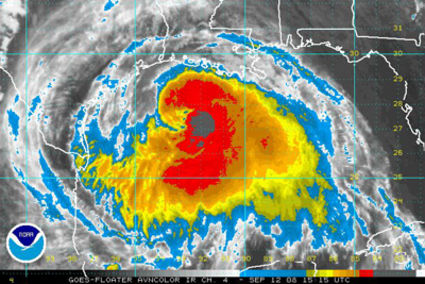Texas Conducts Multi-Agency Evacuation Exercise
Last updated 6/9/2016 at Noon
Hypothetical ‘Hurricane Tejas’ Leads to Evacuation of 300 ‘Evacuees’
Staff Report - For The Record
AUSTIN – The Texas Department of Public Safety’s (DPS) Texas Division of Emergency Management (TDEM), in coordination with local, state, federal and private sector partners, is conducting a full-scale air evacuation exercise in response to a hypothetical hurricane scenario in which the Rio Grande Valley (RGV) is evacuated.
This exercise provides the emergency management community an opportunity to practice and evaluate local, state and federal emergency plans by evacuating a sample group of approximately 300 “general and medical evacuees” (exercise volunteers) from the lower Rio Grande Valley to the sheltering jurisdictions of San Antonio, Austin, Fort Worth and Irving.
The exercise began on June 2 and concludes Thursday, with air evacuations and sheltering taking place today and Thursday.
“As areas of our state continue to cope with the impact of recent weather-related disasters, we must remember that the 2016 hurricane season is also upon us,” said DPS Director Steven McCraw. “Protecting Texans from natural disasters demands vigorous preparation, and exercises like this keep our emergency management system honed and ready to assist our local partners should a significant storm threaten Texas.”
“Efficient and effective preparation for potential hurricanes by our emergency responders as well as our residents has the power to save lives when a storm takes aim at the Texas coast,” said TDEM Chief Nim Kidd. “It is imperative that emergency responders at all levels continually bolster their ability to successfully implement disaster plans and seamlessly coordinate efforts – and that is exactly what this exercise is designed to do.”
The exercise is based on a fictional scenario featuring “Hurricane Tejas,” which begins as a Cape Verde (Africa) tropical disturbance that strengthens to a category five hurricane with sustained winds of 145 mph. As the storm moves west-northwest through the Gulf of Mexico, it threatens the Rio Grande Valley, causing local jurisdictions to request evacuation support. As part of the scenario, as many as one million Rio Grande Valley residents could be impacted requiring mass evacuations, with tens of thousands needing sheltering support.
From June 2 through Tuesday, the exercise focused on inter-governmental coordination using simulated tropical storm advisories. Participating entities conducted conference calls to coordinate pre-landfall operations using hurricane response plans on a 120-hour timeline.
The second phase of the exercise, which involves actual air evacuations and sheltering – is now underway and will conclude on Thursday.
Approximately 300 volunteer “evacuees” today are being registered in the Texas Emergency Tracking Network (ETN), triaged into vehicles that meet individual needs, and transported to the Valley International Airport in Harlingen.
Aircraft will then transport the “evacuees” to the Metroplex and Austin, where they will then be transported by bus to shelter locations.
The “medical evacuees” are being transported from the RGV to San Antonio on Texas Air National Guard C-130 aircraft. On Thursday, evacuees will be returned to the RGV to simulate evacuee repopulation.
Key participating organizations in this exercise include the Texas Department of Public Safety; Texas Department of State Health Services; Texas A&M Forest Service; Texas Military Department; Alamo Regional Command Center; Federal Emergency Management Agency; Transportation Safety Administration; and multiple volunteer organizations. Additionally, local participating jurisdictions include Cameron County area, Hidalgo County area, Bexar County, Dallas County, Tarrant County, Travis County, and the cities of Irving, Fort Worth, San Antonio and Austin.
The 2016 hurricane season began June 1 and continues through Nov. 30.
Texans are urged to develop their own emergency plans before a storm takes aim at Texas, and our residents can visit www.texasprepares.org for various ways to prepare for the 2016 hurricane season.
Additionally, if you or someone you know might need assistance during a disaster, please register now for the State of Texas Emergency Assistance Registry (STEAR), a free registry that provides local emergency planners and responders with additional information about needs in their communities.
To register, contact 2-1-1 Texas, the state’s free 24-hour helpline.
No matter where you live in Texas, you can dial 2-1-1 or (877) 541-7905 for community resources.















Reader Comments(0)